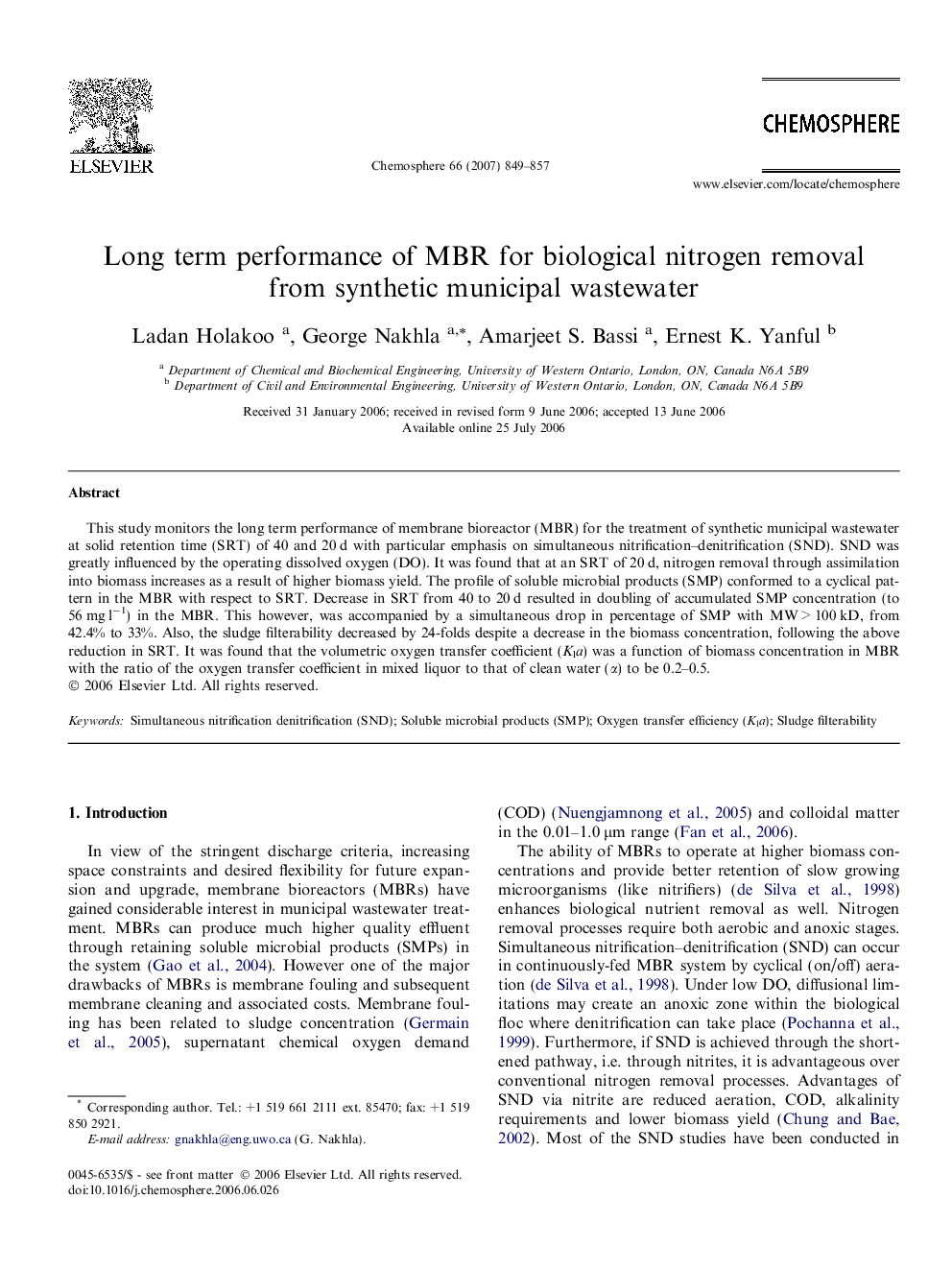| Article ID | Journal | Published Year | Pages | File Type |
|---|---|---|---|---|
| 4415901 | Chemosphere | 2007 | 9 Pages |
This study monitors the long term performance of membrane bioreactor (MBR) for the treatment of synthetic municipal wastewater at solid retention time (SRT) of 40 and 20 d with particular emphasis on simultaneous nitrification–denitrification (SND). SND was greatly influenced by the operating dissolved oxygen (DO). It was found that at an SRT of 20 d, nitrogen removal through assimilation into biomass increases as a result of higher biomass yield. The profile of soluble microbial products (SMP) conformed to a cyclical pattern in the MBR with respect to SRT. Decrease in SRT from 40 to 20 d resulted in doubling of accumulated SMP concentration (to 56 mg l−1) in the MBR. This however, was accompanied by a simultaneous drop in percentage of SMP with MW > 100 kD, from 42.4% to 33%. Also, the sludge filterability decreased by 24-folds despite a decrease in the biomass concentration, following the above reduction in SRT. It was found that the volumetric oxygen transfer coefficient (Kla) was a function of biomass concentration in MBR with the ratio of the oxygen transfer coefficient in mixed liquor to that of clean water (α) to be 0.2–0.5.
